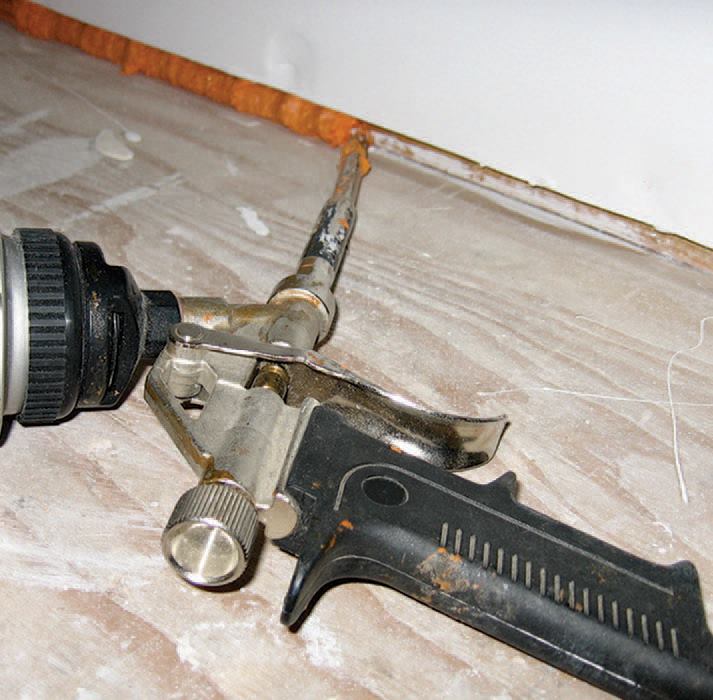The Right Stuff
Another key to effective air-sealing is to have a well-selected assortment of sealing materials available on the job at all times (see slideshow). My usual arsenal includes the following:
Tapes. One benefit of tapes is that they – unlike foam, which is dry and relatively brittle – will flex and move as the building shifts position over time. In the past I used a lot of 3M 8067 Weather Flashing tape, but recently I switched to Swiss-made SIGA tapes, which are specifically designed for air-sealing buildings (siga.ch). The company provides excellent information and product support. At $0.30 to $0.40 per linear foot, these tapes are expensive up front, but I like knowing that the work I leave behind will continue to perform well far into the future.
Siga makes many varieties of tape, but I rely mostly on just two: a product called Rissan for interior use, and one called Wigluv for general exterior use. Both stick firmly to most dust-free surfaces, though some materials – like concrete or masonry – should be treated with a primer called Dockskin first.
Both Rissan and Wigluv have easily-removed paper backing strips. The company also manufactures a plastic belt dispenser that is very easy to use and helps minimize waste.
Another useful product is Nashua foil tape, which is flexible foil that works well for sealing can lights and electrical boxes.
Mastics and caulks. Never rely on cheap caulk for air-sealing! I like Perma-Chink’s Energy Seal Caulk because it stays flexible after it sets up and accommodates quite a bit of movement (permachink.com). We buy it in 5-gallon buckets, each of which contains the equivalent of about 55 tubes of caulk. We use it with air-powered caulking guns (Albion Engineering, albioneng.com), which makes it easy to put down a uniform bead and minimizes strain on your hand and forearm. A variety of nozzles are available, including one that lets you lay down four parallel beads in a single pass. This system is a good alternative to canned foam for many applications.
Water-based duct mastic is handy for sealing small cracks and joints that are too tight to accept caulk or foam and too irregular to seal with tape. Nonhardening duct putty will conform to almost any shape and comes in handy for plugging larger gaps and holes. I like Gardner-Bender Duct Seal (gardnerbender.com), which is available from most hvac suppliers.
Polyurethane foam. Although spray foam is still one of the most versatile air-sealing materials out there, I now use more tape and caulk and less foam than I used to. A big problem with foam is that its expansiveness can make it hard to tell what’s going on. The presence of a pillow of foam outside the hole you set out to fill doesn’t necessarily mean that you’ve completely filled the hole itself. I use high-expansion foam for most applications, and buy it a case at a time.
I find that all foam guns fail sooner or later, so I buy the cheap $50 guns and just replace them as needed. I always have two on the site – one for regular use and one for backup.
But any gun will last longer if you follow a few simple rules: First, never allow it to sit around unattached to a can, since that will allow the inner chambers to harden. I also make it a point to flush my guns periodically with gun cleaner. If I’m not going to use a gun for more than a month or so, I flush it with cleaner and store it in a Ziploc bag. Foam works best at around 80°F, so I keep a heat gun handy to carefully warm it up when required. Remember to shake the can before use.
Rigid foam and plywood. For very large holes or problem areas that are difficult to seal otherwise, we’ll cut and fit a sheet of 1-inch foam or 1/4-inch plywood and use one of the above materials – most often caulk or spray foam – as the actual air-sealant. When I show up on the job site, I always have an assortment of scrap plywood, OSB, and polystyrene or polyiso board in my truck.
